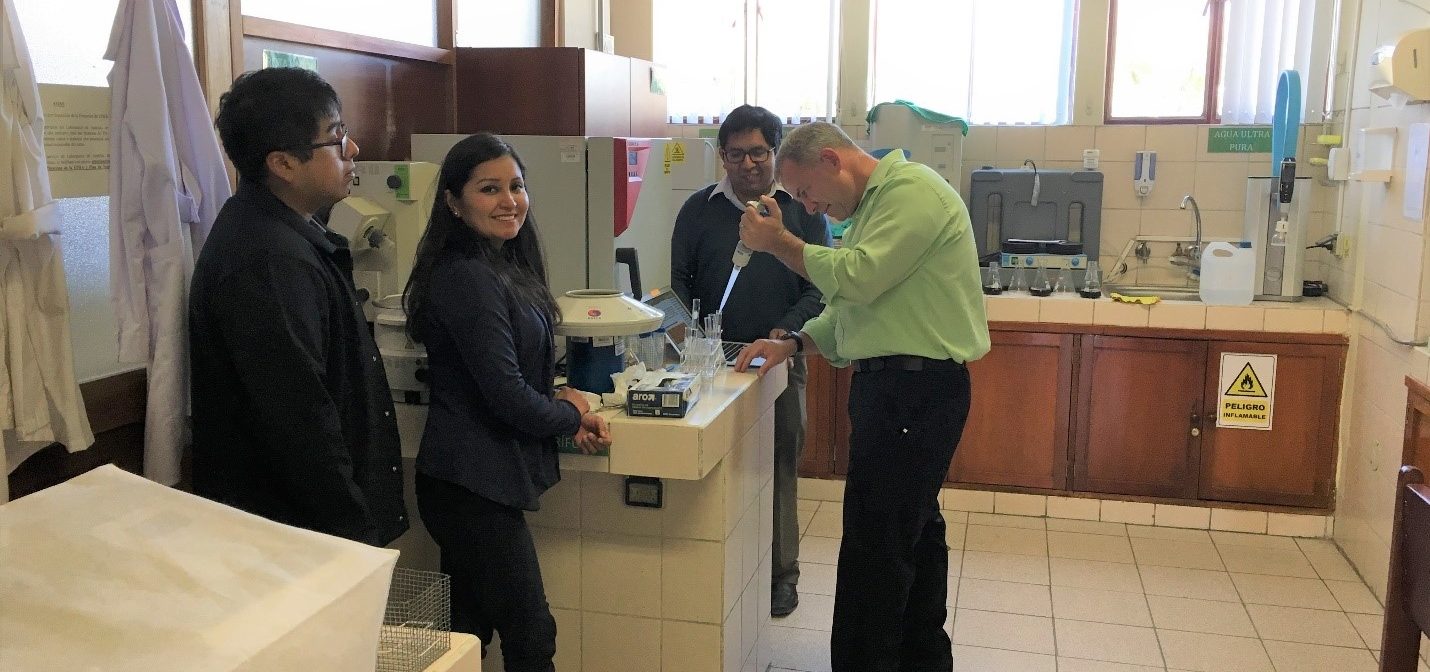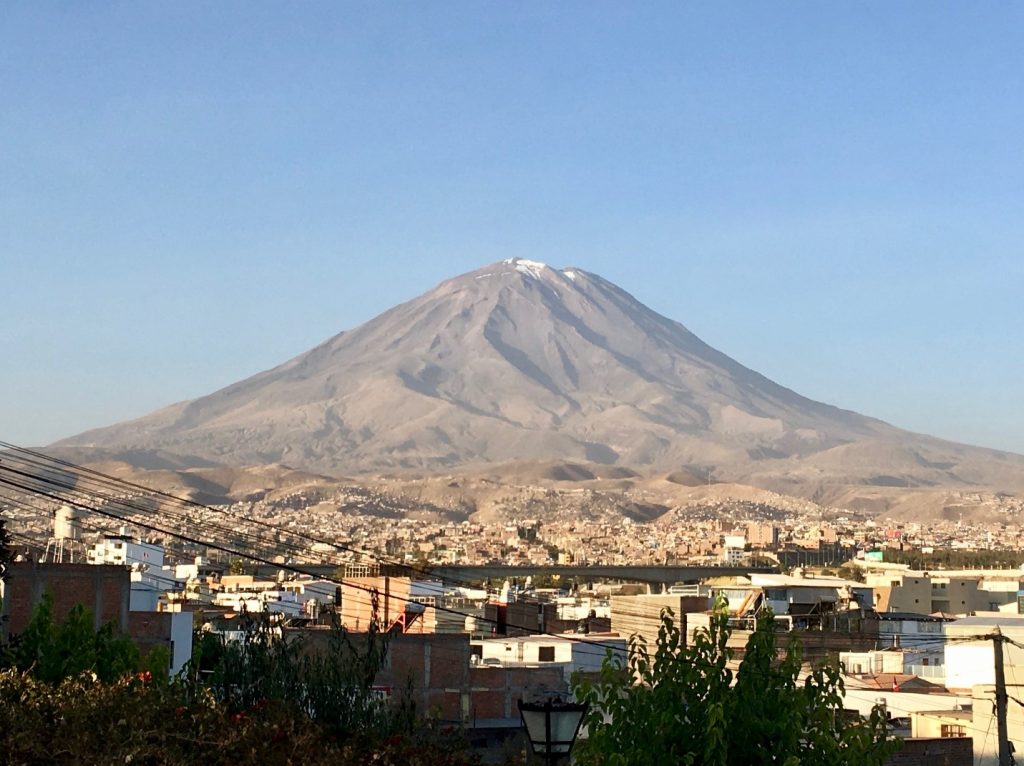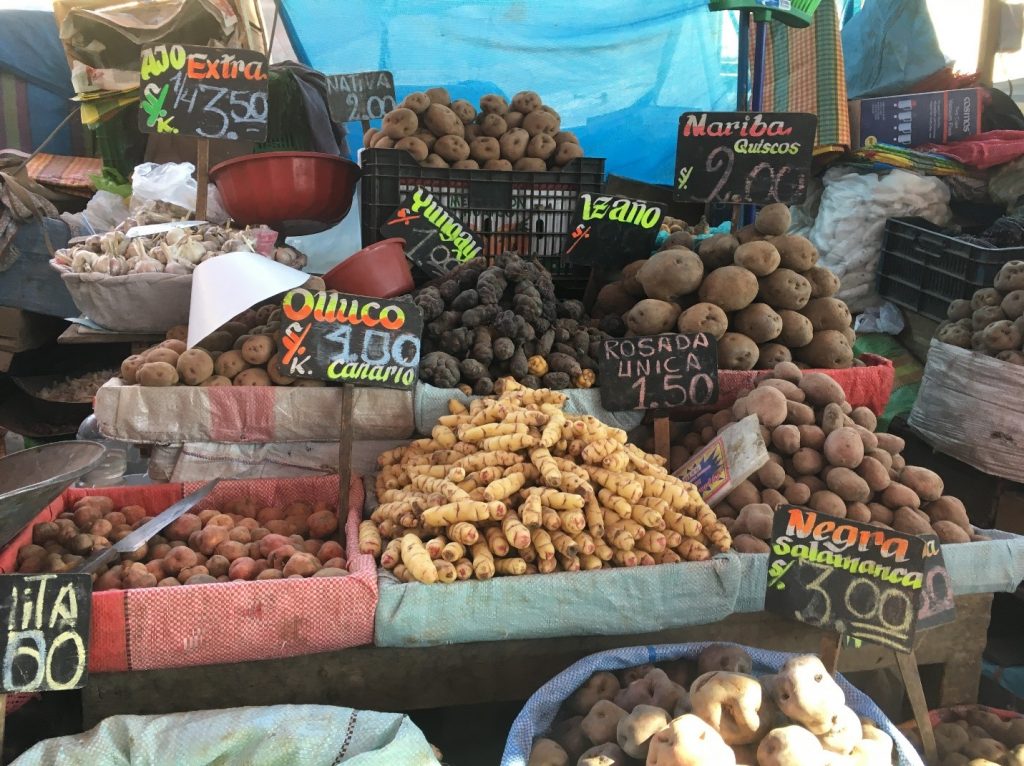
Dr. Harris in the Food Chemistry lab testing for caffeine and chlorogenic acid content in Peruvian coffee.
Dr. Keith Harris, from CALS’ Department of Food, Bioprocessing and Nutrition Sciences recently returned from a weeklong trip to Arequipa, Peru where he led a workshop on HPLC use in food analysis, and met with students and faculty at the Universidad Nacional de San Agustin de Arequipa (UNSA). Dr. Harris returned from the trip energetic and enthusiastic about the many opportunities that existed to pursue collaborative work with UNSA. “Working in Perú, and in Arequipa, Perú at UNSA in particular represents a great opportunity for NC State faculty and students to engage in capacity building and to establish strong transdisciplinary teaching and research partnerships with faculty and students. With delicious Andean cuisine, a mixture of colonial Spanish and native Incan cultures, and the snow-covered volcano, Misti, always in the background, Arequipa is rich in culture and history.”

“My goal is to establish student exchange programs with UNSA that would combine food science-related education and cultural knowledge. Specifically, I would like to take students from NC State to Perú in order to have them develop food analysis methods, give educational talks, improve their Spanish skills, sample the local cuisine, and visit important archeological sites” said Dr. Harris. The opportunities for cultural and educational exchanges are beyond faculty research collaborations. For example, since the undergraduate curriculum at UNSA lasts 5 years rather than 4, the students are able to cover all the basic food science coursework during the first four years, and have their final year to learn more about traditional Andean fruits and vegetables. This is where Dr. Harris believes NC State students can benefit greatly from a visit to Peru.

Since returning from Arequipa, Keith has been in touch with a number of UNSA professors, as well as with faculty within his department regarding new projects and collaborations. “They have specifically expressed interested on collaborations in the area of plant pigments, starch chemistry, nutritional properties of Andean fruits and vegetables, the scholarship of teaching and learning, and making stronger connections to professional organizations.”, said Dr. Harris. These are in addition to the two collaborative projects that Dr. Harris took on as part of the terms of his travel to UNSA. He will be working with two students as an advisor on their research thesis projects over the next year. The project titles and descriptions are:
- Elaboración de Panetón con Almidón y Confitados de Oca (Oxalis Tuberosa) [Preparation of Panettone with Starch and Candied Oca (Oxalis Tuberosa)] This project will incorporate varying levels of starch from a tuber known as Oca, as well as candied Oca, into traditional Panettone recipes.
- El Uso de Extractos Naturales de la Cascara de Café para Aumentar Propiedades Antioxidantes y Extender la Vida Útil de la Bebida sin Aumentar Niveles de Cafeína [The Use of Natural Extracts from the Coffee Shell to Increase Antioxidant Properties and Extend the Shelf Life of the Drink without Increasing Caffeine Levels] This project will seek to selectively extract antioxdants from the coffee cherry that may serve to extend the shelf life of a coffee beverage without further increasing caffeine content.
In addition to these ongoing projects, Dr. Harris will participate in an online nutrition seminar with the faculty and students at UNSA on October 14 and 15 of 2019.
For additional information about the CALS collaboration with UNSA and/or Peru, take a look at our CREdO page: https://cals.ncsu.edu/international-programs/credo/ and feel free to contact CALS International Programs CREdO Coordinator (Connecting Research, Education and Outreach), Dr. Sara Prado with any questions or comments.